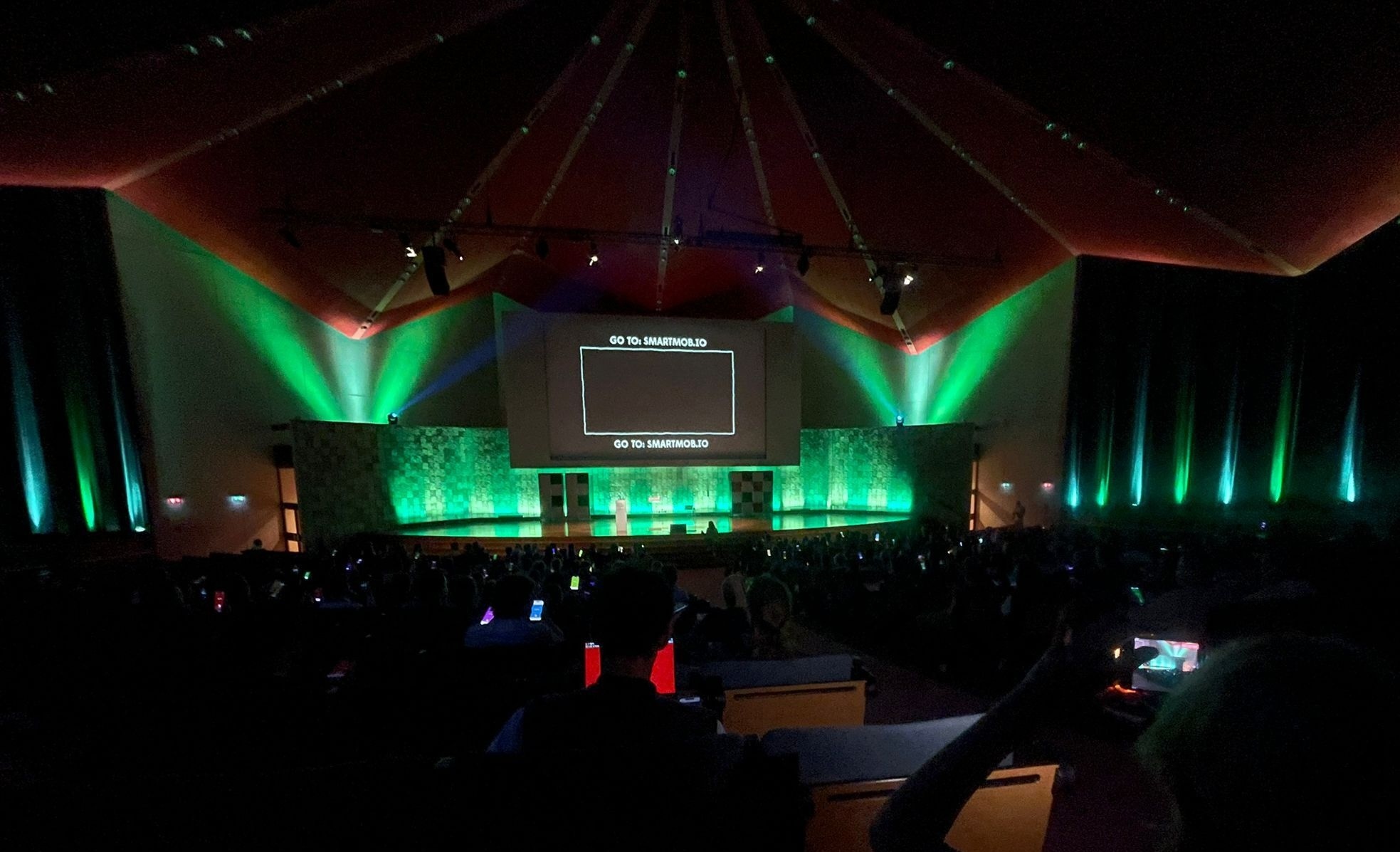
National XR Day 2025: from Disconnected Instruments to a Powerful Symphony
How do we ensure that new technologies like XR lead to connection instead of alienation, and can lead to a better society where people and organizations are brought closer together? The 'energizer' by Steye Hallema, creative director of the SmartPhone Orchestra, provided a striking answer to this recurring question at XR Day 2025 (organized by SURF, in collaboration with Erasmus University and Erasmus Centre for Data Analytics) by creating a live music piece using only the smartphones of the hundreds of attendees. Each phone acted as a unique instrument, brought together by one virtual conductor. It wasn't the technology itself that was central, but the direct human connection it made possible.
Preparing for a Complex Society
Jantine Schuit, rector magnificus of Erasmus University, emphasized in her welcome speech that XR helps students prepare for the new complexity of society. Consider multidisciplinary issues around sustainability, inclusion, or digital ethics. She called for connections not only within disciplines but also between educational levels. MBO, HBO, and WO each have their own strengths, and it's in this collaboration that the key to inclusive innovation lies.
In line with this thought, the event frequently referenced MindLabs: a place where social sciences, behavioral sciences, and technological innovation meet to develop XR solutions for societal challenges.
The Missing Link is ‘Why’
Frank Buitendyk from Gartner Futures Lab outlined a future where everything and everyone is digitally connected. The new generation is growing up with a ‘collaboration first’ mentality. At the same time, society is under pressure from privacy issues, polarization, and mental health problems. According to Buitendyk, the missing link lies in the question: why? Technology is only valuable when it contributes to public values and a more resilient, inclusive society. XR can help with this, provided it is developed and applied with a clear social goal in mind.
XR is Collaboration
During the panel discussion between Npuls, DUTCH, and CIIIC, it became evident once again that the development and application of XR depend on the strength of the ecosystem from which it originates or in which it lands. Success depends on collaboration between all involved parties, from creators to educational institutions and from companies to social organizations. There are already various projects showing what this can look like.
Npuls, which contributes to the innovation of Dutch education, is working with and for its ecosystem on a national platform for XR content called Simulearn. This will be a central marketplace where schools can find, share, implement, and manage XR content, including quality frameworks and a framework for both teachers and creators. This removes a frequently mentioned barrier: where can I find high-quality and accessible XR content that fits my educational practice? The platform is expected to be operational by the end of this year and contributes to broader accessibility of XR in the educational field. More information can be found at www.npuls.nl.
Other inspiring examples were mentioned by DUTCH, the program that stimulates the development of XR solutions in the healthcare sector. Think of simulations that train healthcare professionals in complex procedures, but also XR applications that reduce stress in patients before an operation. This not only saves medication but also increases patients' well-being. These applications demonstrate how XR can have a direct impact on the quality of care. View these and other projects at www.dutch.technology.
Another case that was highlighted is SpaceBuzz, which shows how XR can contribute to social awareness. Their program gives children an ‘overview effect’ through a VR rocket experience. Students experience what it is like to look at the Earth from space, increasing their awareness of sustainability and interconnectedness. SpaceBuzz is now internationally active and applicable in various educational contexts. Read more at spacebuzz.org.
And of course, there was the previously mentioned SmartPhone Orchestra by Steye Hallema, which served as an energizer during XR Day. By using each phone in the room as an individual instrument and bringing them together into a harmonious whole, a powerful experience of co-creation and connection was created. This concept can also be used for educational and cultural events. More information can be found at smartphoneorchestra.com.
From Individual Applications to a Symphony
What these examples have in common is that they do not approach XR as a gadget or experiment, but as an instrument to create social value. Technology gains meaning when people connect and combine their expertise. XR cannot change society, but people who use XR intelligently and responsibly can.
Would you like to know how your organization can join these projects or further your XR ambitions? View the projects through the mentioned websites, contact CIIIC for connection to relevant programs and partners, or share your own initiatives, so we can continue to strengthen this community of XR innovators.